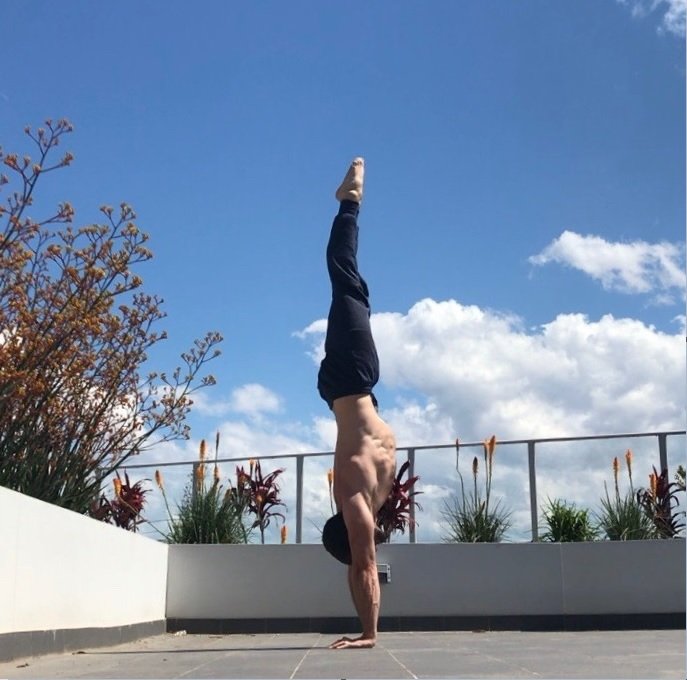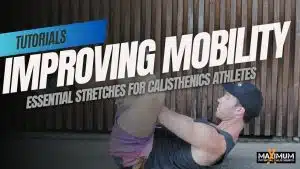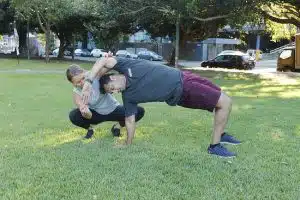
If you’ve worked on handstands you know that there is no shortage of aspects to improve – kick up, hand position, straightening arms, elevating scapulae, head position, rib cage tilt, pelvic tilt, glute engagement, leg position, toe point, balance, endurance… not to mention further complications in the handstand variations!
Sometimes if you work on scap elevation (“push your shoulders to your ears”) for a while, you might find that you are piking a bit at the hips. So you start working on your pelvic tilt, only to find that you’re getting all planchey in the shoulders again! It is a bit of a balancing act (excuse the pun!), maintaining some aspects of the handstand while you work on others, which can become a little bit frustrating. Also, feeling frustrated is not a mindset that is conducive to good handstands (more on this later). You may do some of your best handstands when you just forget all about technique and don’t really think about anything at all (though this isn’t how you build consistency!).
So if focusing on minor details leads to frustration, but being unfocused leads to inconsistency and “bad” technique, then how the hell do you do a good handstand??
Firstly, you need a consistent kick up. Work on your kick up to bail out (not even trying to hold the handstand) until you get a feel for the technique. Your hands should be planted, with your shoulders slightly FORWARDS from your hands. Walk your feet in so that you are kicking up, not forwards. Keep the raised leg straight. Try kicking up smoothly on an easy inhale. Here’s the important part: don’t go straight from a failed kick up into another kick up attempt. Instead, stop, breathe, and re-set. Take a decent rest (~60s) every three kick ups. Now that your kick-up is more consistent it is time to look at what you SHOULD focus on in your handstand.
The trick is to focus on the ‘feeling’ of the handstand. You should feel as if you are trying to lengthen your body as much as possible- pressing your hands into the ground/floor hard and reaching up to the sky/ceiling (/canopy?) with your toes. This should automatically point you in the right direction re: shoulder, rib cage, pelvis and leg alignment. Once you are stacked I recommend that you give the scapulae a little bit of an extra push up (you might feel your upper trapezius contract).
If you find a good line like this but you can’t balance because a lot of your weight is over the heels of your hands, it means you’re probably backing off the knuckles and fingers a bit in your kick up. Try to pour your weight into your index knuckles, grab the floor, do your improved kick up, and again focus on lengthening.
If you are finding a decent line with this technique but keep bailing out, it can sometimes just be a matter of fear. A good line can feel more frightening because your weight will be further forwards and your body isn’t as tilted. If you recognise that this is what’s happening, you can acknowledge that the position is going to feel a bit nerve-racking and consciously keep your legs reaching up (you might otherwise subconsciously bend your legs over to take you into a bail out).
If you’ve practised your bailout and worked on the above ‘lengthening’ technique, but you’re ending up undershooting, doing frantic kick-ups or bailing out prematurely …maybe you just don’t really want to be balancing on your hands right now. Psychology is well outside of my scope of practice, so this next bit is purely from my own experience!
Sometimes your mind is racing and you’re not really breathing, and worst of all: you don’t really feel like you can do a handstand at all. Sometimes this happens for a few days or weeks in a row and it really affects your handstands and you start to wonder whether you were ever actually able to do them. The trick for me in this situation was to stick to my technique and regular practice (5-6 times/week), and acknowledge that breathing and calming down had to be a compulsory part of my warm up. I would never leave our wrist prep, and I would also never leave out mindfulness.
Now when I do a good handstand I can shut off the outside world and feel a tremendous amount of body control- it is a cathartic and addictive experience. You’re still going to have good and bad days, but having a clear idea of what you’re trying to ‘feel’ in your handstands can cut out a lot of the pointless kick-ups and wasted weeks!
If this article has helped you please let me know. Ask me anything @crotontraining on Instagram, via email [email protected] or come to an MPC handstand class at Observatory Hill.
Thanks for reading!



